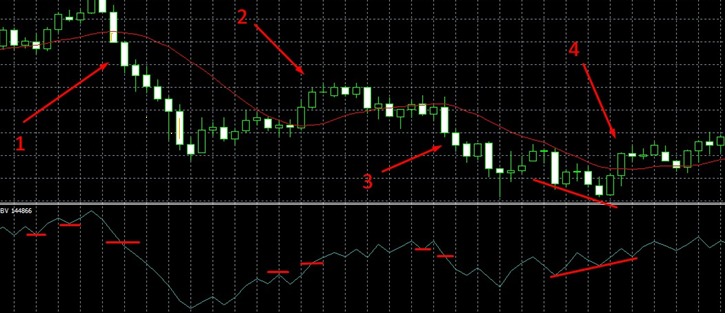1 – A strong signal for several reasons. First, the OBV is high and its reversal means the beginning of a strong descending movement. You can add an oscillator to make sure the price is in the overbought zone. Second, descending candlesticks have a relatively big body, which means the “bears” are getting stronger. Open a transaction at the next candlestick after the price crosses the MA (moving average).
2 – False signal. Although all conditions have been observed, the ascending movement quickly ended. It’s better to close such a transaction manually and not wait for the automatic stop. The reason for closing is the emergence of a Doji candlestick pattern, a thin-line candlestick, which points to the balance between the “bulls” and “bears”.
3 – Weak signal. If there is a candlestick closing under the MA, the OBV goes down. Despite the signal weakness, it’s still profitable. But it’s also better to close the transaction manually. The signal is the emergence of a reversal pattern, in this case, the “hammer”.
4 – Strong signal, divergence. The price goes down, each following an OBV minimum that is higher than the previous one. Open a transaction right after the price crosses the MA.
Leaving the market is an individual decision. It’s desirable to control open transactions and close them manually on reversal signals. Transactions can be insured by trailing if you set it a bit further than the local extremum.
